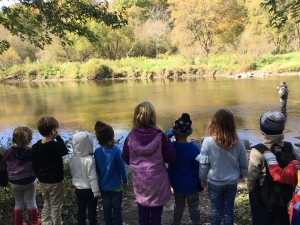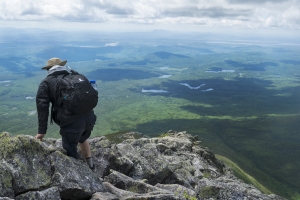
Change the Narrative with Your Year-End Gift
Young children don’t grow up knowing inequities, they just know the world they see around them. One child may wake up to littered streets, a concrete playground, perhaps a few trees in the median. Another child may wake up on what appears nearly to be a different planet. A lawn and garden outside their door, a playground full of trees and squirrels, and access to safe green spaces just around the corner. Each child is unknowingly receiving messages from the environment about the value of beauty, the value of nature, and even self-worth. These two contrasting worlds exist in some cases less than half a mile apart!
A Hike and Fundraiser for the Urban Ecology Center
The thought of hiking 100 miles through the northern Maine wilderness was just an idea thrown around between my dad (Alan) and I (Erin) until one day at the end of 2016, we decided to book flights and make it happen. After months of training, it was finally time to get on a plane and go to Monson, Maine. We started our hike on Mt. Katahdin, the northern most point of the Appalachian Trail. Everything we would need for the next 11 days was on our backs and once we entered the 100 Mile Wilderness, there was no access to civilization until we reached the other side.
Copyright © 2023 The Urban Ecology Center




